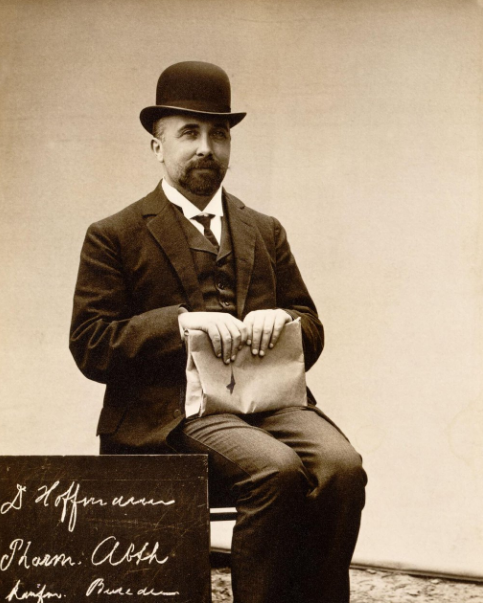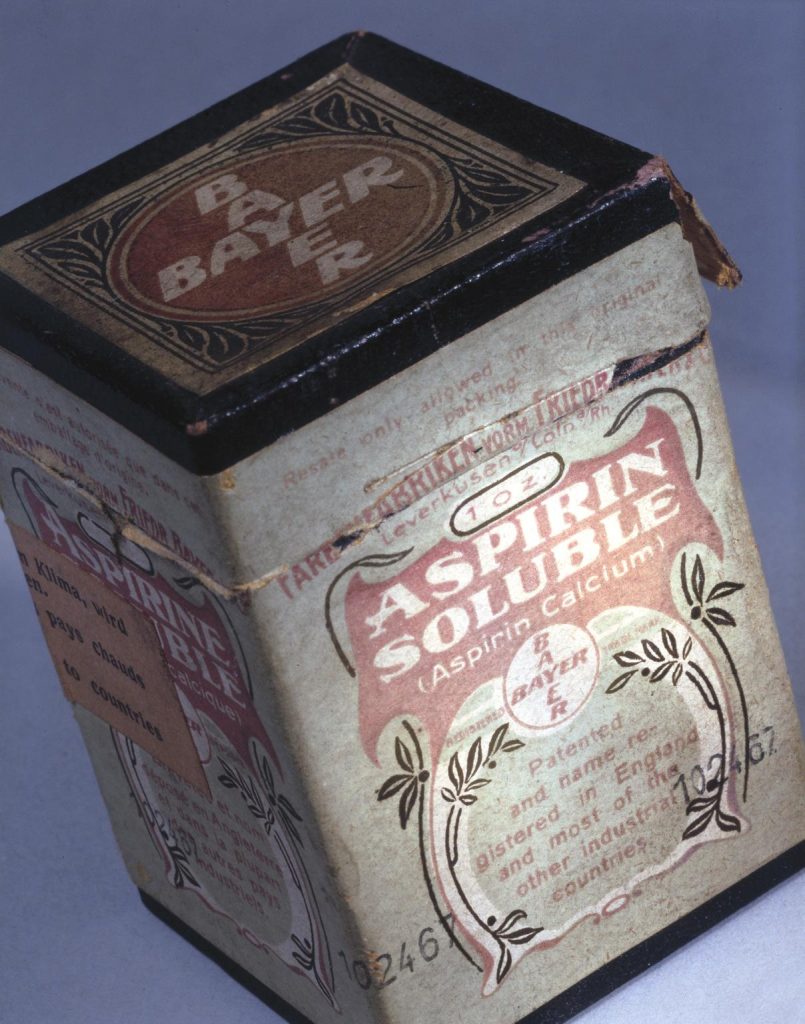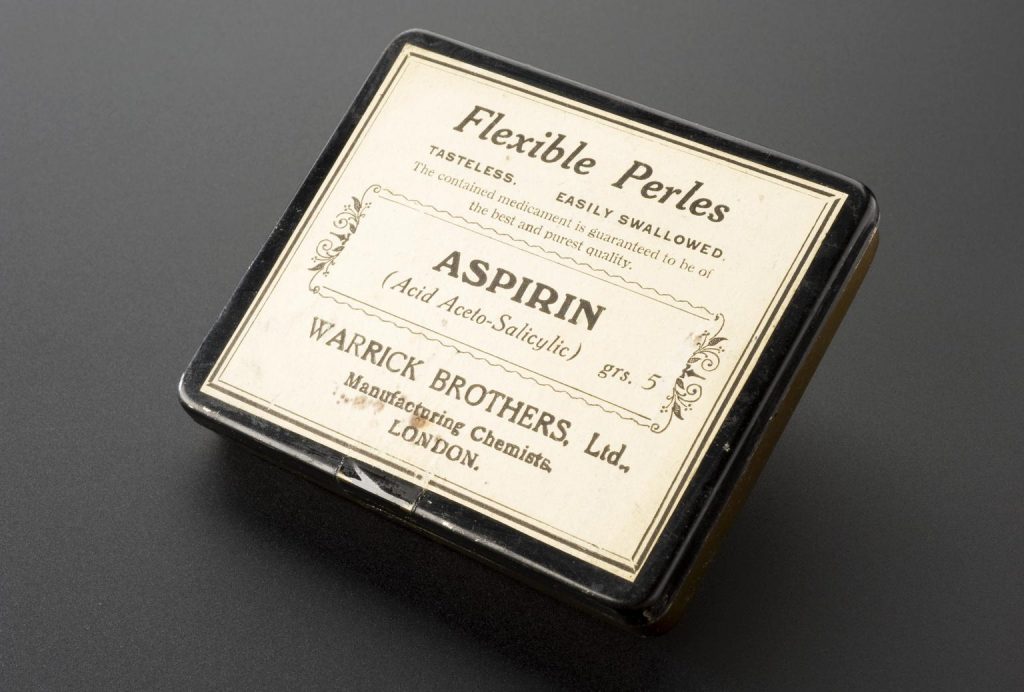On this Day (10 August) in 1897 German chemist Felix Hoffman made the first synthesis of the analgesic aspirin. Curator of Chemistry Sophie Waring explores the story behind the creation of the ubiquitous painkiller.
While aspirin has been one of the most popular pharmaceutical agents of the past 120 years, it is actually a synthetic derivative of a substance found in tree bark and in a number of grains, fruits and vegetables, salicylic acid, the associated healing properties of which have been known for millennia.
4,000 years ago Sumerians noted the pain relief of willow tree bark on early clay tablets. Salicylic acid, extracted from willow trees, was used to treat fever, pain, and inflammation in ancient Mesopotamia.
In ancient Greece, Hippocrates (460–370 BCE) recommended chewing on willow-tree bark to patients suffering from fever and pain, as well as the use of a tea brewed from willow bark to lessen the pain of childbirth.
The chemical investigation of the healing properties of the substance found in willow bark began when Napoleon blocked continental imports, which affected supplies of Peruvian cinchona-tree bark (another natural source of salicylic acid).
In 1828 a yellow substance was isolated from willow tree tannins by Johann Büchner, a professor at the University of Munich; he named the substance salicin, the Latin word for willow. A year later, a pure crystalline form of salicin was isolated in 1829 by Henri Leroux, a French pharmacist, who prescribed it to treat rheumatism.

The beginning of aspirin as we know it today dates from the late 1880s.
In 1878, a chemical laboratory was built by Friedrich Bayer and Company, a dye-manufacturing firm in Germany that had begun to shift from the dye industry to pharmaceutical production. The company was a very successful manufacturer, producing synthetic dyes from coal-tar derivatives after the invention of William Perkin’s famous mauvine dye in the 1850s.
in 1895 the head of chemical research at Bayer, Arthur Eichengrün, assigned the task of developing a ‘better’ salicylic acid to one of the company’s chemists, Felix Hoffmann. Along with the ancient knowledge of the healing benefits of salicylic acid, the negative effects of prolonged use of the drug for digestion were also well known.

Hoffmann was particularly motivated; his father had rheumatism and could no longer take salicylic acid without suffering from vomiting and painful cramps. Hoffmann discovered a way to alter salicylic acid chemically, modifying the hydroxyl group on the benzene ring. The key to Hoffman’s discovery, although not realised till the 1970s, was that this slightly altered salicylic acid could be absorbed by the body without gastrointestinal discomfort.
Once swallowed, the new molecule is converted back to salicylic acid in the blood and is able to relieve pain after being ingested. Hoffman’s synthetic aspirin wasn’t the discovery of a new treatment, but is remembered by historians as the invention of a drug-delivery system for a natural product that has been in medical use for millennia.
The first tablet form of aspirin appeared in 1900, alongside power forms, creating an ease of use that quickly expanded the drug’s prominence for both medical professionals and patients. In 1915 aspirin became available without a prescription, making it the first synthetic, over-the-counter, mass-market medicine and a household name around the world.
Marketing campaigns for pharmaceutical products like aspirin were prominent throughout the 1900s as the Bayer fought back against other companies who produced aspirin after Hoffman’s innovation at the turn of the century.
In the Science Museum’s Making the Modern World Gallery you can see aspirin tablets manufactured in London, by the Warwick Brothers after the Second World War.
